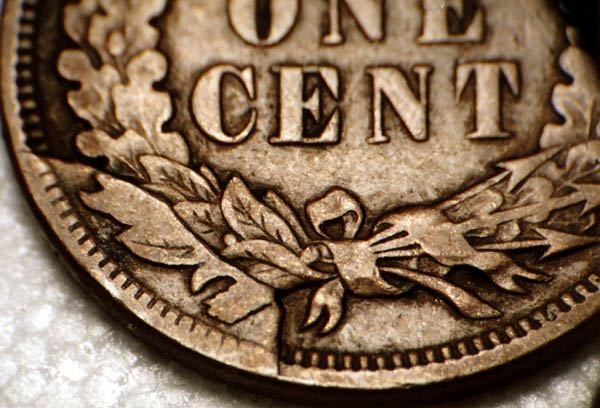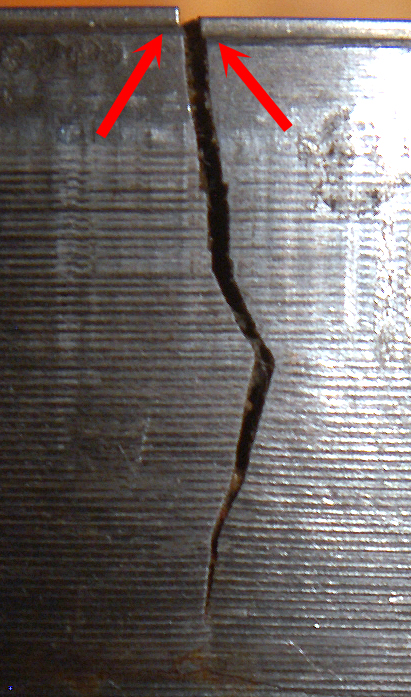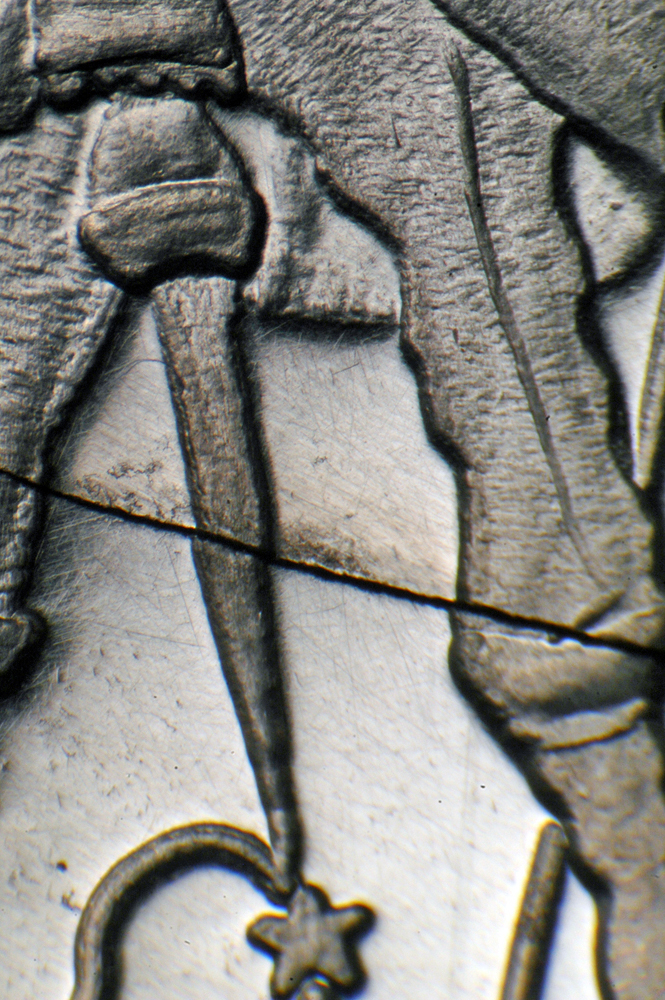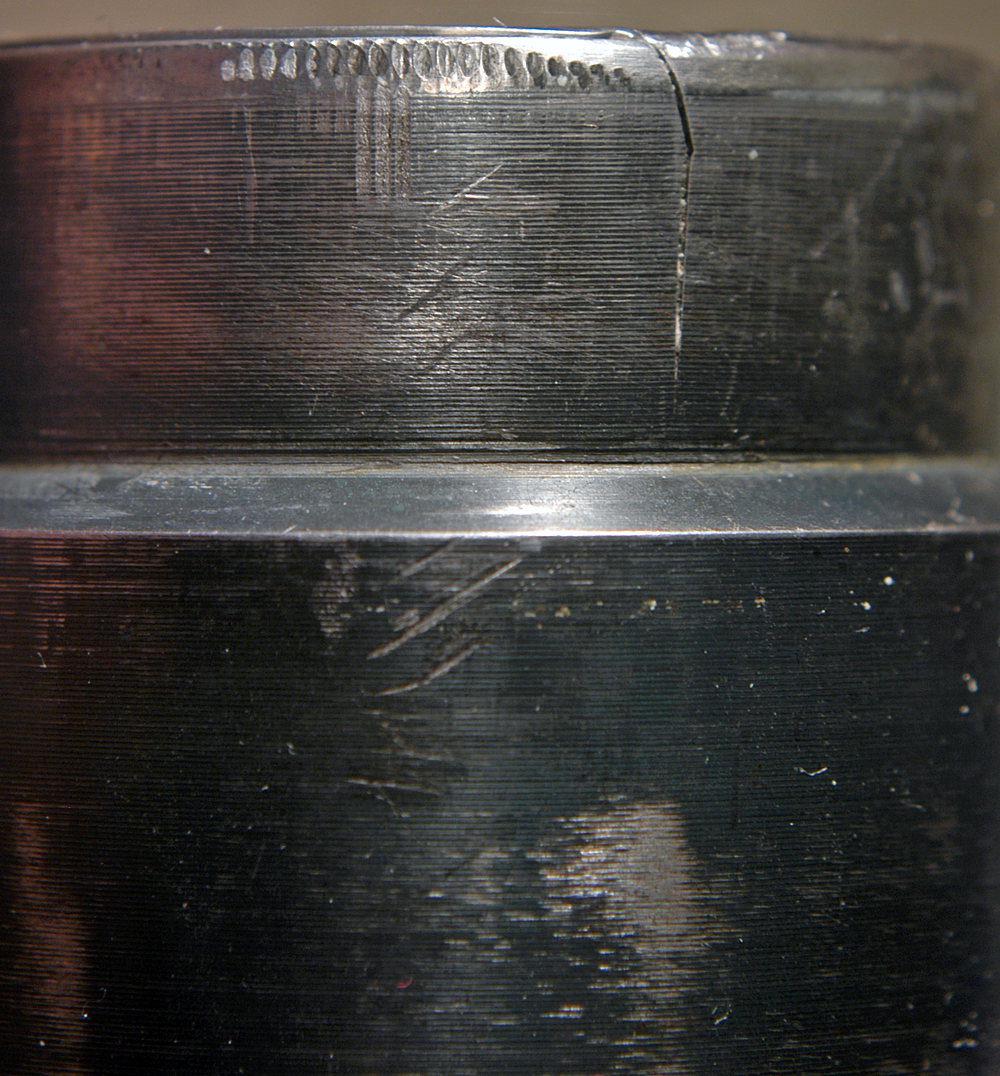|
|
|
|
Retained Cuds -- Are They All Really
Cuds?
Images © Ken Potter 2015
Die from the Ken Potter Collection of Dies

This 1906 Indian Head cent features what collectors refer to
as a Retained Cud
A Retained Cud is generally described as being the result of a piece of die that has broken completely away from the face and edge of a die. The accepted definition suggests that this broken chunk of die is being held in place by gravity, the collar, or the upper tooling that fixes the die in place (when involving the hammer die). However, it is possible that none of these methods of retainment are factors for many coins now being defined as Retained Cuds.
If that's the case, one has to ask the question of how a chunk of die that is completely separated from the die body can be held in place if none of these factors are in play much of the time? The answer is that many coins described as Retained Cuds are most probably not from dies with a chunk of die fully separated from the die body!
|
|
This is circumstantially evident by the fact that few of the Retained Cuds listed by Paul Marvin and Arnold Margolis in the Design Cud and by Sam Thurman and Margolis in The Cud Book are known as full blown Cuds. Logic would suggest that many if not most known Retained Cuds would eventually develop into full blown Cuds, especially those involving the hammer die -- yet this is not the case.

Here is a side view of our Conde-Cavaliers Mardi Gras Doubloon
die. This is the end of the die crack that runs through the O of CONDE.
Notice that the left side is higher than the right.
Based on my examination of a number of broken dies, I have noted that some dies that are on the verge of shattering or developing into Cuds often show horizontal and vertical misalignment of the fields and/or devices.
I demonstrate this with a 1977 Conde-Cavaliers Mardi Gras Doubloon that is on the verge of shattering. You'll note that the major rim-to-rim die crack (which can be considered a Split Die) running from about 5:00 O'clock to 7:30 O'clock is particularly well separated as it enters and passes through the O of CONDE. The O is split into two different levels and is horizontally misaligned with the left half of the O in closer to the center of the die than the right side.
A further examination of this die on its edge shows that the left side of the crack is up further north than the right side, demonstrating a vertical misalignment.
One might argue that the pressure of the strike would push the upper half of the die to the left of the crack back down but it is clear that trapped planchet metal in the form of a die crack would help to prevent this from happening in full. Additionally, you can see that debris is already starting to collect in the crack. This debris would help prevent the die face from being fully seated horizontally.
In closing, I think it is safe to assume that not all coins referred to as Retained Cuds conform to the existing definition. However, for many of these coins it will be tough to tell which do conform and which don't without seeing the actual die that struck the coins.

This image shows the displacement of design (the pirate's
sword) caused by the die crack.

Here is the die crack that runs through the E of CAVALIERS.
You can also see evidence of a Collar Clash. Notice that the collar clash is
doubled demonstrating that either the die, collar or both have moved in relation
to each other during subsequent clashes.
Ken Potter
KPotter256@aol.com
Numismatist Since 1959 ~ Serving
The Collector Since 1973
CONECA's Longest Serving Doubled Die Attributer
Member of: ANA-LM, CONECA-HLM,
NLG, NCADD-FM, IASAC, MSNS-HLM
NWDCC, RCC, WBCC